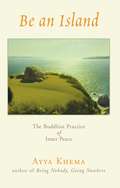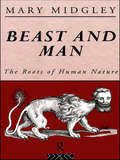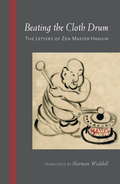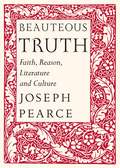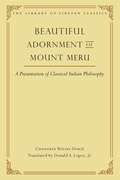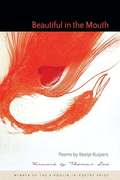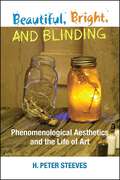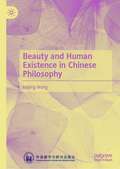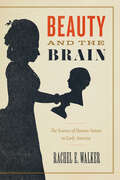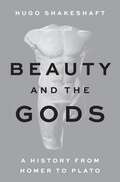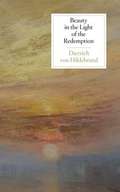- Table View
- List View
Be a Light Unto Yourself: Discovering and Accepting Who You Are from the Words of the Buddha
by Priya HemenwayAn accessible self-help guide to learning to trust yourself, inspired by the spiritual teachings of the Buddha.Gautama Buddha was the founder of what we know as Buddhism, a spiritual tradition that is recognized throughout the world as one of compassion, peace, and understanding. Like his final words, Gautama Buddha's teachings were often simple phrases that carried profound thoughts and implications. When the words of the Buddha were gathered together, a special collection was made - The Dhammapada or The Way of Truth. Be a Light Unto Yourself relates the story of Gautama Buddha and the spiritual revolution he began. It is a collection of teachings that relate strongest to the power and depth of the statement “Be a light unto yourself.” This book teaches you to know yourself and to always look within yourself for guidance and to trust your own senses. Among the teachings you'll find:“Your life is determined by the nature of mind . . . A silent mind creates a peaceful life. Happiness will follow this mind like an ever-present shadow.”“Not in the sky, not in the deepness of the sea, not in the rocky clefts of the mountains is there a spot in the world where you can hide from yourself.”“If you can govern your anger like a charioteer his chariot, you are a real driver; otherwise you simply hold the reins.”
Be a Light Unto Yourself: Discovering and Accepting Who You Are from the Words of the Buddha
by Priya HemenwayAn accessible self-help guide to learning to trust yourself, inspired by the spiritual teachings of the Buddha.Gautama Buddha was the founder of what we know as Buddhism, a spiritual tradition that is recognized throughout the world as one of compassion, peace, and understanding. Like his final words, Gautama Buddha's teachings were often simple phrases that carried profound thoughts and implications. When the words of the Buddha were gathered together, a special collection was made - The Dhammapada or The Way of Truth. Be a Light Unto Yourself relates the story of Gautama Buddha and the spiritual revolution he began. It is a collection of teachings that relate strongest to the power and depth of the statement “Be a light unto yourself.” This book teaches you to know yourself and to always look within yourself for guidance and to trust your own senses. Among the teachings you'll find:“Your life is determined by the nature of mind . . . A silent mind creates a peaceful life. Happiness will follow this mind like an ever-present shadow.”“Not in the sky, not in the deepness of the sea, not in the rocky clefts of the mountains is there a spot in the world where you can hide from yourself.”“If you can govern your anger like a charioteer his chariot, you are a real driver; otherwise you simply hold the reins.”
Be an Island
by Ayya KhemaFrom the best-selling author of Being Nobody, Going Nowhere, Ayya Khema's Be an Island guides us along the path of Buddhist meditation with direct and practical advice, giving us contemplative tools to develop a healthy sense of personal being. Be an Island is at once an introduction to the teachings of Buddhism and a rich continuation of Ayya Khema's personal vision of Buddhist practice.
Beast and Man: The Roots of Human Nature
by Mary MidgleyPhilosophers have traditionally concentrated on the qualities that make human beings different from other species. In Beast and Man Mary Midgley, one of our foremost intellectuals, stresses continuities. What makes people tick? Largely, she asserts, the same things as animals. She tells us humans are rather more like other animals than we previously allowed ourselves to believe, and reminds us just how primitive we are in comparison to the sophistication of many animals. A veritable classic for our age, Beast and Man has helped change the way we think about ourselves and the world in which we live.
Beast and Man: The Roots of Human Nature (Routledge Classics Ser.)
by Mary Midgley`Beast and Man is a brilliant and persuasive attempt to set us in our animal context, ... and to indicate a morality for a society without religious absolutes - a morality of which we see the rudiments in our brother species.' - The Observer
Beastly Morality: Animals as Ethical Agents
by Jonathan K. CraneWe have come to regard nonhuman animals as beings of concern, and we even grant them some legal protections. But until we understand animals as moral agents in and of themselves, they will be nothing more than distant recipients of our largesse. Featuring original essays by philosophers, ethicists, religionists, and ethologists, including Marc Bekoff, Frans de Waal, and Elisabetta Palagi, this collection demonstrates the ability of animals to operate morally, process ideas of good and bad, and think seriously about sociality and virtue.Envisioning nonhuman animals as distinct moral agents marks a paradigm shift in animal studies, as well as philosophy itself. Drawing not only on ethics and religion but also on law, sociology, and cognitive science, the essays in this collection test long-held certainties about moral boundaries and behaviors and prove that nonhuman animals possess complex reasoning capacities, sophisticated empathic sociality, and dynamic and enduring self-conceptions. Rather than claim animal morality is the same as human morality, this book builds an appreciation of the variety and character of animal sensitivities and perceptions across multiple disciplines, moving animal welfarism in promising new directions.
Beat the Incumbent: Proven Strategies and Tactics to Win Elections
by Louis PerronIncumbents enjoy many advantages when they seek reelection, but their distinct disadvantages (such as not fulfilling promises or staying within the status quo) are ripe weaknesses for opposing candidates to knock them down. Studying the US's Barack Obama, Ukraine's Volodymyr Zelensky, and France's Emmanuel Macron, among many other candidates, political strategist Louis Perron, PhD, describes tactics to assess the strength of the incumbent, the quality of the challenger, and how to control and win a campaign. Readers interested in running for office or in assisting a political campaign will learn how to build a top-notch team, define your target audience, increase your media presence, develop your message, advertise effectively, deliver great speeches, and prepare to win debates. For relatively new challengers, Perron demonstrates how lack of experience has become less important and how these weaknesses can be neutralized. When campaigns turn ugly and play dirty, he instructs candidates how to combat against character attacks and how they can make a comeback if they lose the election. With over a decade of experience orchestrating political campaigns around the globe, Perron's Beat the Incumbent is the essential step-by-step guide for any level of political office to challenge an incumbent and, once victory is claimed, how you can avoid the same traps to effect change and win reelection.
Beating the Cloth Drum: Letters of Zen Master Hakuin
by Norman Waddell HakuinHakuin Ekaku (1685-1769) is one of the most influential figures in Zen Buddhism. He revitalized the Rinzai Zen tradition (which emphasizes the use of koans, or unanswerable questions, in meditation practice), and all masters of that school today trace their lineage back through him. He is responsible for the most famous of all koans: "What is the sound of one hand clapping?" He is also famous for his striking and humorous art, which he also regarded as teaching. This book provides a rare, intimate look at Hakuin the man, through his personal correspondence. Beating the Cloth Drum contains twenty-eight of Hakuin's letters to students, political figures, fellow teachers, laypeople, and friends. Each letter is accompanied by extensive commentary and notes. They showcase Hakuin's formidable, thoughtful, and sometimes playful personality--and they show that the great master used every activity, including letter-writing, as an opportunity to impart the teachings that were so close to his heart.
Beauteous Truth: Faith, Reason, Literature And Culture
by Joseph PearceFor those, like myself, who have enjoyed and greatly benefitted from reading the essays of Joseph Pearce, published in a variety of venues, especially as editorials in the Saint Austin Review, but who have not practically been able to save them in an effective way for future consultation and reflection, the present volume is indeed a great gift. For those who are not familiar with the essays of Joseph Pearce, the volume represents a treasure of the most solid Catholic thought on important aspects of culture, both historical and contemporary, especially as it expresses itself through literature. Joseph Pearce has a remarkable gift of writing about history, literature, and culture in general. His writing is objective and accessible, that is, it shows his steadfast attention to the truth and to language which manifests the same truth in its inherent beauty or natural attractiveness. The fifth essay in this collection, "History Revisited," for instance, is a sterling example of his gift for such writing. The essays of Joseph Pearce reveal his profound understanding of reason and faith, of classical realist philosophy and Catholic doctrine, which permits him to write about history, literature, and culture in general with an unfailing attention to the objective reality of God and of His earthly creation, that is, of man and of the world.
Beautiful Adornment of Mount Meru (Library of Tibetan Classics)
by Donald Lopez Changkya Rölpai DorjéThe most lucid and penetrating survey of classical Indian philosophy in the Tibetan language.Beautiful Adornment of Mount Meru by Changkya Rölpai Dorjé (1717–86) is a work of doxography, presenting the distinctive philosophical tenets of the Indian Buddhist and non-Buddhist schools in a systematic manner that ascends through increasingly more subtle views. It is a Tibetan corollary to contemporary histories of philosophy. The &“Mount Meru&” of the title is the Buddha&’s teachings, and Changkya&’s work excels in particular in its treatment of the two Mahayana Buddhist schools, the Yogacara (here called the Vijñaptimatra) and the Madhyamaka. Unlike Jamyang Shepa&’s (1648–1722) much longer Great Exposition of Tenets, which was one of the key sources and inspirations for Changkya, Beautiful Adornment is often praised for the clarity of its prose and its economical use of citations from Indian texts. At the same time, like Jamyang Shepa&’s work, Changkya&’s text is not simply a catalog of assertions; it skillfully examines core philosophical issues, including a number of intriguing ancillary discussions. Also like Jamyang Shepa&’s text, Changkya&’s is very much a Geluk work, drawing heavily on the works of Tsongkhapa and his disciples. The manageable size of Beautiful Adornment and, more importantly, its lucid literary style, made this work the classic source for the study of Indian thought, used by students the across Tibetan cultural sphere. In contemporary academic circles, it has also been a central source for studying the Tibetan interpretation of the classical Indian philosophical systems.
Beautiful Country Burn Again: Democracy, Rebellion, and Revolution
by Ben FountainIn a sweeping work of reportage set over the course of 2016, New York Times bestselling author Ben Fountain recounts a surreal year of politics and an exploration of the third American existential crisis Twice before in its history, the United States has been faced with a crisis so severe it was forced to reinvent itself in order to survive: first, the struggle over slavery, culminating in the Civil War, and the second, the Great Depression, which led to President Roosevelt’s New Deal and the establishment of America as a social-democratic state. In a sequence of essays that excavate the past while laying bare the political upheaval of 2016, Ben Fountain argues that the United States may be facing a third existential crisis, one that will require a “burning” of the old order as America attempts to remake itself.Beautiful Country Burn Again narrates a shocking year in American politics, moving from the early days of the Iowa Caucus to the crystalizing moments of the Democratic and Republican national conventions, and culminating in the aftershocks of the weeks following election night. Along the way, Fountain probes deeply into history, illuminating the forces and watershed moments of the past that mirror and precipitated the present, from the hollowed-out notion of the American Dream, to Richard Nixon’s southern strategy, to our weaponized new conception of American exceptionalism, to the cult of celebrity that gave rise to Donald Trump.In an urgent and deeply incisive voice, Ben Fountain has fused history and the present day to paint a startling portrait of the state of our nation. Beautiful Country Burn Again is a searing indictment of how we came to this point, and where we may be headed.
Beautiful Geometry
by Eli Maor Eugen JostAn exquisite visual celebration of the 2,500-year history of geometryIf you've ever thought that mathematics and art don't mix, this stunning visual history of geometry will change your mind. As much a work of art as a book about mathematics, Beautiful Geometry presents more than sixty exquisite color plates illustrating a wide range of geometric patterns and theorems, accompanied by brief accounts of the fascinating history and people behind each. With artwork by Swiss artist Eugen Jost and text by math historian Eli Maor, this unique celebration of geometry covers numerous subjects, from straightedge-and-compass constructions to intriguing configurations involving infinity. The result is a delightful and informative illustrated tour through the 2,500-year-old history of one of the most important branches of mathematics.
Beautiful Math: The Surprisingly Simple Ideas behind the Digital Revolution in How We Live, Work, and Communicate
by Chris BernhardtFrom the bestselling author of Quantum Computing for Everyone, a concise, accessible, and elegant approach to mathematics that not only illustrates concepts but also conveys the surprising nature of the digital information age.Most of us know something about the grand theories of physics that transformed our views of the universe at the start of the twentieth century: quantum mechanics and general relativity. But we are much less familiar with the brilliant theories that make up the backbone of the digital revolution. In Beautiful Math, Chris Bernhardt explores the mathematics at the very heart of the information age. He asks questions such as: What is information? What advantages does digital information have over analog? How do we convert analog signals into digital ones? What is an algorithm? What is a universal computer? And how can a machine learn?The four major themes of Beautiful Math are information, communication, computation, and learning. Bernhardt typically starts with a simple mathematical model of an important concept, then reveals a deep underlying structure connecting concepts from what, at first, appear to be unrelated areas. His goal is to present the concepts using the least amount of mathematics, but nothing is oversimplified. Along the way, Bernhardt also discusses alphabets, the telegraph, and the analog revolution; information theory; redundancy and compression; errors and noise; encryption; how analog information is converted into digital information; algorithms; and, finally, neural networks. Historical anecdotes are included to give a sense of the technology at that time, its impact, and the problems that needed to be solved.Taking its readers by the hand, regardless of their math background, Beautiful Math is a fascinating journey through the mathematical ideas that undergird our everyday digital interactions.
Beautiful in the Mouth
by Thomas Lux Keetje KuipersThomas Lux selected this debut collection as winner of BOA's A. Poulin, Jr., Poetry Prize. In his foreword he writes, "I was immediately struck by the boldness of imagination, the strange cadences, and wild music of these poems. We should be glad that young poets like Keetje Kuipers are making their voices heard not by tearing up the old language but by making the old language new."Keetje Kuipers, a native of the Northwest, earned her BA at Swarthmore College and MFA at the University of Oregon. A Stegner Fellow at Stanford University, she divides her time between Stanford and Missoula, Montana.
Beautiful in the Mouth (A. Poulin, Jr. New Poets of America)
by Keetje KuipersThomas Lux selected this debut collection as winner of BOA&’s A. Poulin, Jr., Poetry Prize. In his foreword he writes, "I was immediately struck by the boldness of imagination, the strange cadences, and wild music of these poems. We should be glad that young poets like Keetje Kuipers are making their voices heard not by tearing up the old language but by making the old language new."Keetje Kuipers, a native of the Northwest, earned her BA at Swarthmore College and MFA at the University of Oregon. A Stegner Fellow at Stanford University, she divides her time between Stanford and Missoula, Montana.
Beautiful, Bright, and Blinding: Phenomenological Aesthetics and the Life of Art
by H. Peter SteevesThrough a careful analysis of concrete examples taken from everyday experience and culture, Beautiful, Bright, and Blinding develops a straightforward and powerful aesthetic methodology founded on a phenomenological approach to experience—one that investigates how consciousness engages with the world and thus what it means to take such things as tastes, images, sounds, and even a life itself as art. H. Peter Steeves begins by exploring what it means to see, and considers how disruptions of sight can help us rethink how perception works. Engaging the work of Derrida, Heidegger, and Husserl, he uses these insights about "seeing" to undertake a systematic phenomenological investigation of how we perceive and process a range of aesthetic objects, including the paintings of Arshile Gorky, the films of Michael Haneke, Disney's Beauty and the Beast, zombie films, The Simpsons, the performance art of Rachel Rosenthal and Andy Kaufman, and even vegan hot dogs. Refusing hierarchical distinctions between high and low art, Steeves argues that we must conceptualize the whole of human experience as aesthetic: art is lived, and living is an art.
Beauty Is Oxygen: Finding a Faith That Breathes
by Wesley Vander LugtBeauty is oxygen because it comes from the lungs of God. Isolating individualism, rank injustice, and everyday monotony threaten to suffocate our souls. But Wesley Vander Lugt shows how beauty can breathe life back into us. Written in a graceful cadence that invites readers to turn these pages slowly, Beauty Is Oxygen weaves together theological reflection, poetry, cultural criticism, and Scripture. Throughout, Vander Lugt shows how beauty can break us out of self-centered malaise, promote healing and hope for our broken world, and reenchant our lives. Beauty is about more than positive feelings or pleasing aesthetics. Beauty is as essential to our souls as oxygen is to our bodies. As readers encounter these traces of divine glory in Vander Lugt&’s finely crafted meditations, they will find how Christ will &“make all things new.&”
Beauty Unlimited
by Noël Carroll Gregory Velazco Trianosky&“A feminist aesthetics text which bridges aesthetic theory, art and popular culture and acknowledges the evolving character of standards of beauty&” (Teaching Philosophy). Emphasizing the human body in all of its forms, Beauty Unlimited expands the boundaries of what is meant by beauty, both geographically and aesthetically. Peg Zeglin Brand and an international group of contributors interrogate the body and the meaning of physical beauty in this multidisciplinary volume. This striking and provocative book explores the history of bodily beautification; the physicality of socially or culturally determined choices of beautification; the interplay of gender, race, class, age, sexuality, and ethnicity within and on the body; and the aesthetic meaning of the concept of beauty in an increasingly globalized world.
Beauty Will Save World: Recovering the Human in an Ideological Age
by Gregory WolfeA writer in residence at Seattle Pacific University, Wolfe founded and edits the literature and arts journal Image. Here he shares his thoughts about how Christian humanism can improve the world. His sections cover from ideology to humanism; Christianity, literature, and modernity; six writers; three artists; and four men of letters. Among his topics are a portrait of the editor as a young man, the writer of faith in a fractured culture, Evelyn Waugh, Wendell Barry, Mary McCleary, and Malcolm Muggeridge. Annotation ©2011 Book News, Inc. , Portland, OR (booknews. com)
Beauty and Human Existence in Chinese Philosophy
by Keping WangThis book considers the Chinese conception of beauty from a historical perspective with regard to its significant relation to human personality and human existence. It examines the etymological implications of the pictographic character mei, the totemic symbolism of beauty, the ferocious beauty of the bronzeware. Further on, it proceeds to look into the conceptual progression of beauty in such main schools of thought as Confucianism, Daoism and Chan Buddhism. Then, it goes on to illustrate through art and literature the leading principles of equilibriumharmony, spontaneous naturalness, subtle void and synthetic possibilities. It also offers a discussion of modern change and transcultural creation conducted with particular reference to the theory of the poetic state par excellence (yi jing shuo) and that of art as sedimentation (ji dian shuo).
Beauty and Sublimity
by Patrick Colm HoganRecent decades have witnessed an explosion in neuroscientific and related research treating aesthetic response. This book integrates this research with insights from philosophical aesthetics to propose new answers to longstanding questions about beauty and sublimity. Hogan begins by distinguishing what we respond to as beautiful from what we count socially as beautiful. He goes on to examine the former in terms of information processing (specifically, prototype approximation and non-habitual pattern recognition) and emotional involvement (especially of the endogenous reward and attachment systems). In the course of the book, Hogan examines such issues as how universal principles of aesthetic response may be reconciled with individual idiosyncrasy, how it is possible to argue rationally over aesthetic response, and what role personal beauty and sublimity might play in the definition of art. To treat these issues, the book considers works by Woolf, Wharton, Shakespeare, Arthur Miller, Beethoven, Matisse, and Kiran Rao, among others.
Beauty and the Brain: The Science of Human Nature in Early America
by Rachel E. WalkerExamining the history of phrenology and physiognomy, Beauty and the Brain proposes a bold new way of understanding the connection between science, politics, and popular culture in early America. Between the 1770s and the 1860s, people all across the globe relied on physiognomy and phrenology to evaluate human worth. These once-popular but now discredited disciplines were based on a deceptively simple premise: that facial features or skull shape could reveal a person’s intelligence, character, and personality. In the United States, these were culturally ubiquitous sciences that both elite thinkers and ordinary people used to understand human nature. While the modern world dismisses phrenology and physiognomy as silly and debunked disciplines, Beauty and the Brain shows why they must be taken seriously: they were the intellectual tools that a diverse group of Americans used to debate questions of race, gender, and social justice. While prominent intellectuals and political thinkers invoked these sciences to justify hierarchy, marginalized people and progressive activists deployed them for their own political aims, creatively interpreting human minds and bodies as they fought for racial justice and gender equality. Ultimately, though, physiognomy and phrenology were as dangerous as they were popular. In addition to validating the idea that external beauty was a sign of internal worth, these disciplines often appealed to the very people who were damaged by their prejudicial doctrines. In taking physiognomy and phrenology seriously, Beauty and the Brain recovers a vibrant—if largely forgotten—cultural and intellectual universe, showing how popular sciences shaped some of the greatest political debates of the American past.
Beauty and the Brain: The Science of Human Nature in Early America
by Rachel E. WalkerExamining the history of phrenology and physiognomy, Beauty and the Brain proposes a bold new way of understanding the connection between science, politics, and popular culture in early America. Between the 1770s and the 1860s, people all across the globe relied on physiognomy and phrenology to evaluate human worth. These once-popular but now discredited disciplines were based on a deceptively simple premise: that facial features or skull shape could reveal a person’s intelligence, character, and personality. In the United States, these were culturally ubiquitous sciences that both elite thinkers and ordinary people used to understand human nature. While the modern world dismisses phrenology and physiognomy as silly and debunked disciplines, Beauty and the Brain shows why they must be taken seriously: they were the intellectual tools that a diverse group of Americans used to debate questions of race, gender, and social justice. While prominent intellectuals and political thinkers invoked these sciences to justify hierarchy, marginalized people and progressive activists deployed them for their own political aims, creatively interpreting human minds and bodies as they fought for racial justice and gender equality. Ultimately, though, physiognomy and phrenology were as dangerous as they were popular. In addition to validating the idea that external beauty was a sign of internal worth, these disciplines often appealed to the very people who were damaged by their prejudicial doctrines. In taking physiognomy and phrenology seriously, Beauty and the Brain recovers a vibrant—if largely forgotten—cultural and intellectual universe, showing how popular sciences shaped some of the greatest political debates of the American past.
Beauty and the Gods: A History from Homer to Plato
by Hugo ShakeshaftHow ideas and experiences of beauty informed human relationships with the divine in ancient GreeceBeginning with the earliest Greek literature, the epics of Homer and Hesiod, beauty was seen as having a special connection with the divine. The gods of ancient Greece were defined by their exceptional beauty; even today, &‘to look like a Greek god&’ is proverbial for human beauty. In Beauty and the Gods, Hugo Shakeshaft explores the relationship between the beautiful and divine in ancient Greece, principally in the Archaic period (ca. 750–480 BCE). Analysing evidence that ranges from poetry, art, and philosophical texts to architecture and the natural landscape, Shakeshaft shows how ideas and experiences of beauty shaped Greek relations with the divine.With a powerful call for the place of beauty and aesthetics in the writing of history, Shakeshaft uncovers the cultural dialogue between beauty and the gods in a variety of contexts in the Archaic Greek world: in forms of divine worship; in poetry, music, and dance; in attitudes to the natural environment; and in architecture and art. This early chapter of Greek history, he argues, holds an unrecognised key to understanding some long-running threads in the histories of religion, art, and aesthetics, from Plato&’s aesthetic theories to beauty&’s status in contemporary discourse. Beauty&’s deep past and divine connection in ancient Greece can help us see beauty now in sharper focus.
Beauty in the Light of the Redemption
by Dietrich Von Hildebrand"What importance is to be attributed to beauty in the life of a Christian? What role should it play in the life of those who have been redeemed? What is the relationship between redemption and beauty? Did beauty lose its significance after the redemption?" These are some of the questions the author answers in this collection of essays, which introduces his philosophy of art, truth, and beauty.

